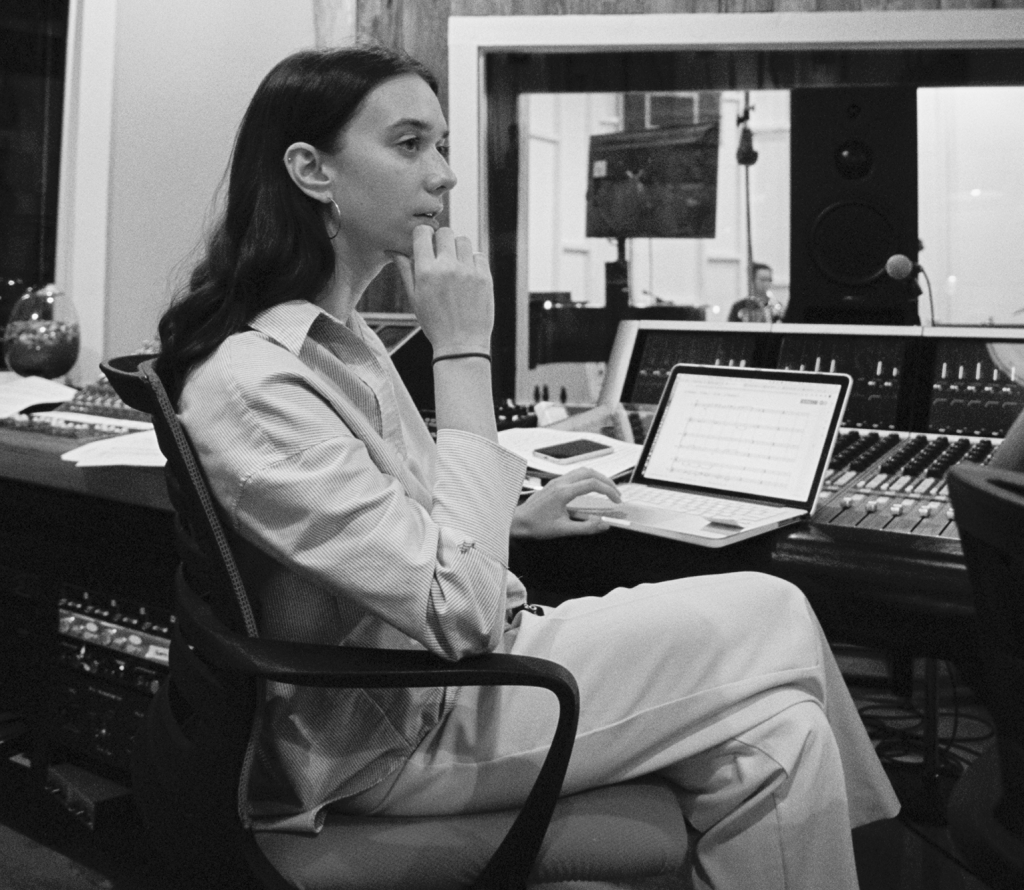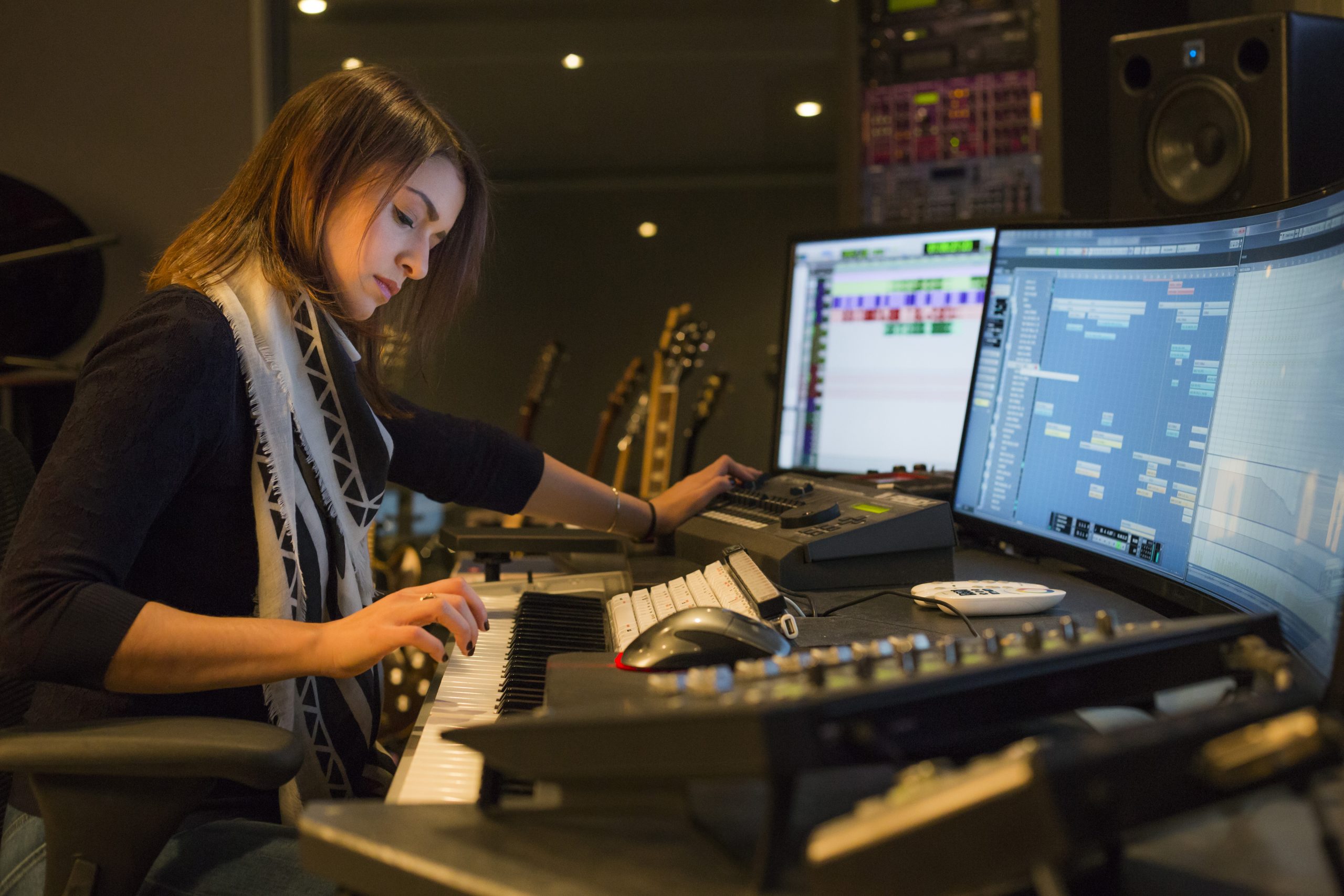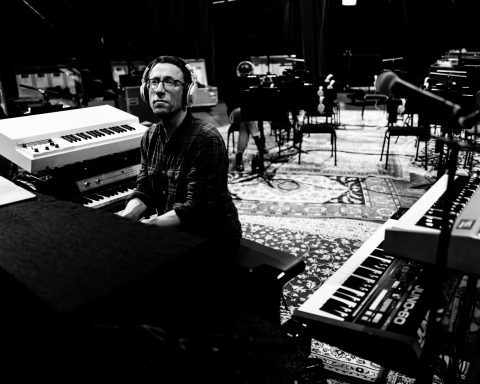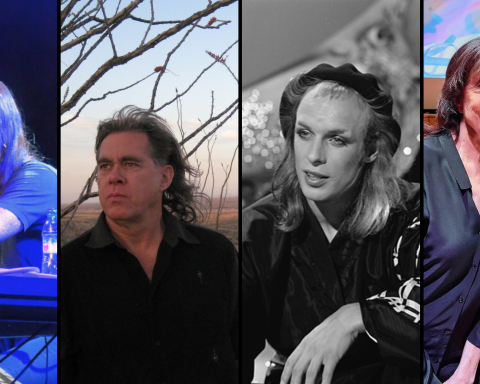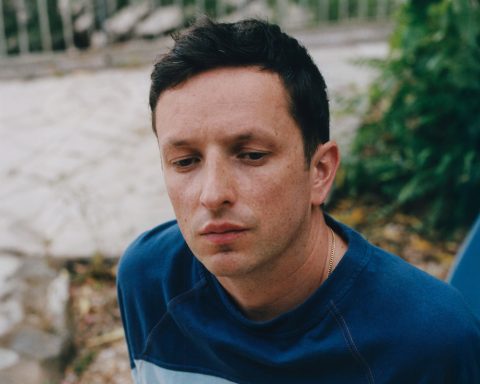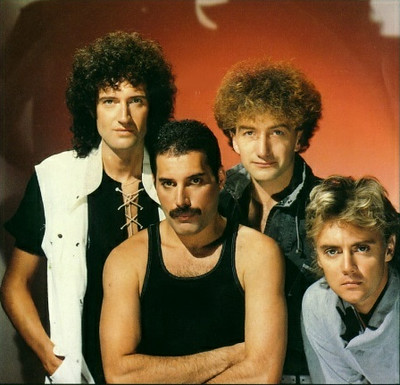Composing music for visual media can be daunting for those new to the format. After all, film scores are a complex realm where technology meets classical music. Some beginners may be formally trained but still new to working with software. Others might be proficient DAW users but lack the experience of a traditional orchestrator. To demystify the inner workings of scoring to picture, we spoke with eight experienced composers. Their unique paths to success offer valuable strategies for newcomers and veterans alike.
Stephanie Economou
Stephanie Economou made history by winning the first Grammy Award for Best Score Soundtrack for Video Games and Other Interactive Media. Before this victory, she had more than a decade of experience under her belt. Still, she was relatively new to composing music for video games when she took on Assassin’s Creed Valhalla: Dawn of Ragnarok.
“I was lucky the music supervisor at Ubisoft, Simon Landry, prioritized collaborating with new talent,” Economou says. A new talent she might have been, but new to gaming, she was not. “In games, you’re a part of the story,” she states.
Economou learned on the job. “As the composer, you have to have the foresight that most of your tracks will be looped,” she explains as an example. “They may even be multi-layered to offer a vast wealth of permutations dependent on the player’s choices. Your job is to find solutions to ensure that the music still has breath and life.”
Soon, Economou stepped out of the black metal-inspired score of Dawn of Ragnarok and built a universe of happy synth motifs for Ruby Gillman, Teenage Kraken, to live in. “I was writing a lot of dream pop for that DreamWorks feature, and my JUNO-60 became a big part of the sonic signature,” Economou recalls. The Roland synth and her are inseparable. “My JUNO is the one synth you’ll have to pry from my cold, dead hands.”
"In a series, you have to make some kind of throughline that is recognizable enough that the audience can track."
Alex Weston
Alex Weston
Alex Weston turned heads earlier this year with his score for the Amazon Prime Video mini-series Expats starring Nicole Kidman. Yet, this wasn’t his first time collaborating with director Lulu Wang. “On The Farewell, Lulu and I were complete strangers,” Weston shares.
Each project is a singular experience. “Finding the right language for the film took lots of work, communication, and experimentation,” he says. “On our next collaboration, Nian, the tone was completely different, and thus we were back to square one. The same applies to Expats.”
Earlier in his career, Weston scored numerous shorts and a few feature-length films. However, Expats stands out as his first TV series. When asked what he learned from this experience, Weston states, “We had six and a half hours, and the score had to sound cohesive. We planned which themes and motifs we would continue to use and expand upon. In a series, you have to make some kind of throughline that is recognizable enough that the audience can track.”
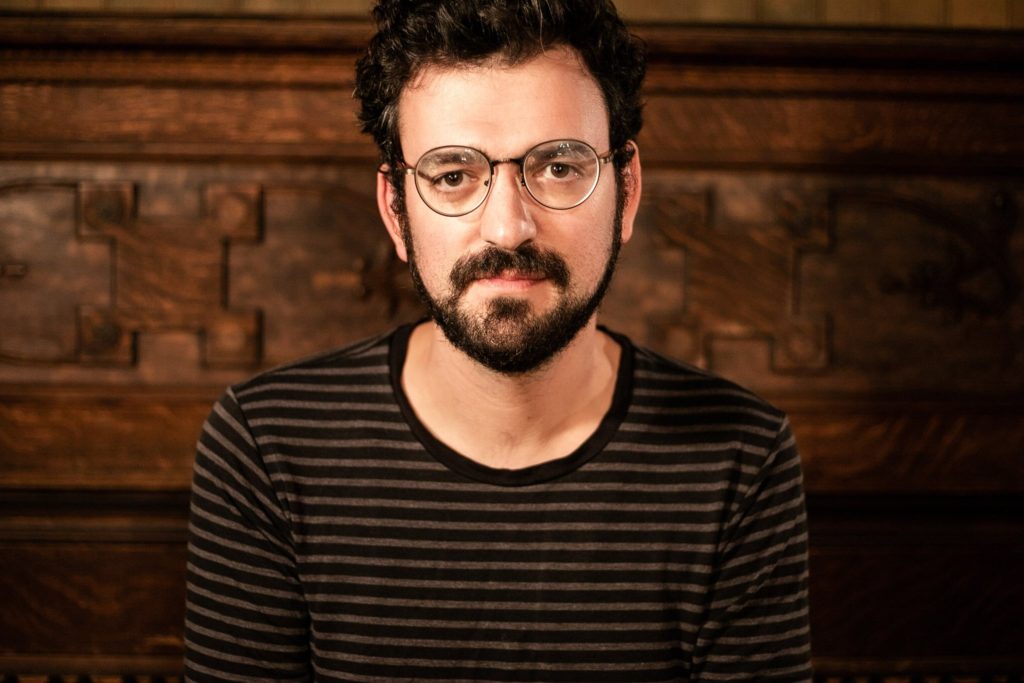
"When I worked on the 'Paint It Black' arrangement, the show was still in early production. There was no footage for me to view as they were going to shoot the scene to the soundtrack."
Esin Aydıngöz

Esin Aydıngöz
Esin Aydıngöz has composed music for many indie shorts, Apple TV+, Hallmark, and Amazon Prime Video productions. But her cello arrangement for the hit Netflix series Wednesday earned her her first Grammy nomination.
“When I worked on the “Paint It Black” arrangement, the show was still in early production. There was no footage for me to view as they were going to shoot the scene to the soundtrack,” she remembers, and adds: “Alana Da Fonseca and I did the cello arrangement together. The recording we initially delivered was all done with MIDI. Eventually, we got the video from Episode 1 with Jenna Ortega acting to our arrangement. Then, I updated the sheet music to reflect some changes, and our cellist, Jacob Braun, recorded the part.” There were some twists and turns, but teamwork prevailed in the end.
These days, Aydıngöz is also busy conducting orchestras on stage. “Composing is so satisfying because you are the creator. Conducting is so energizing because instead of going it alone in your studio, you get to share a stage with 80 other musicians,” she says. By diversifying her career, Aydıngöz expands her musicianship every day. In doing so, she follows her own advice: “If you care so much about something and truly want it to be spectacular, it naturally comes with some stress. I’m comfortable being uncomfortable and wouldn’t have it any other way.”
"Being the lead composer entails responsibilities beyond composing music. You need a strong team."
Juan Carlos Enriquez
Juan Carlos Enriquez
Juan Carlos Enriquez has so many IMDb credits it’s easy to lose count. Some of his recent work can be heard on the NBC Peacock series ‘Til Jail Do Us Part and Netflix’s Maya and the Three.
Having worn the hat of lead and additional composer on so many projects, Enriquez has these words of wisdom to share: “If you’re an additional composer, everything you work on is reviewed and approved by the lead composer before it’s shown to the filmmakers. Being the lead composer entails responsibilities beyond composing music, such as frequent meetings, reviewing contracts, branding yourself, keeping the filmmakers at ease, controlling budgets, and keeping track of changing deadlines,” he explains. “That is why, as a lead composer, you need a strong team.”
Although he’s a big believer in teamwork, Enriquez reaps the benefits of being a multi-instrumentalist in the studio. “I use Roland’s FP-30X digital piano as my main MIDI controller. I love how the weighted keys feel when I’m composing,” says Enriquez. His instrument collection is ever-expanding: “I also play and record electric and acoustic guitars, which include Latin American string instruments such as the ronroco, charango, and jarana jarocha.” By acquiring new world instruments, Enriquez ensures that he never runs out of raw sources for creative sound design.
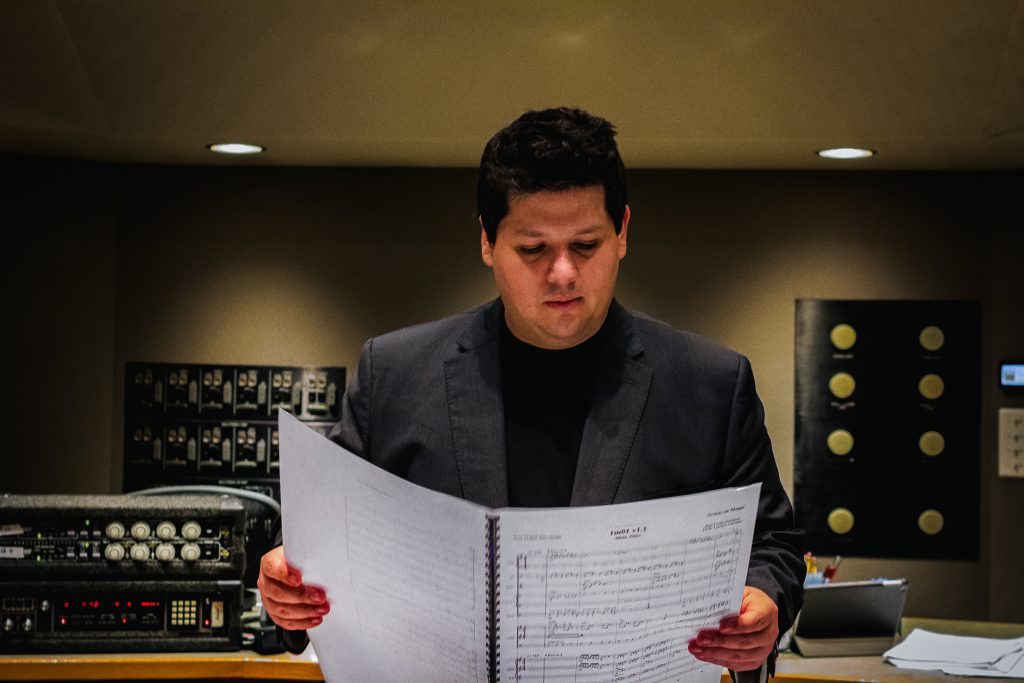
"When writing a melodic theme, I ask myself, 'Can I sing this? Could someone hum this?'"
Tori Letzler
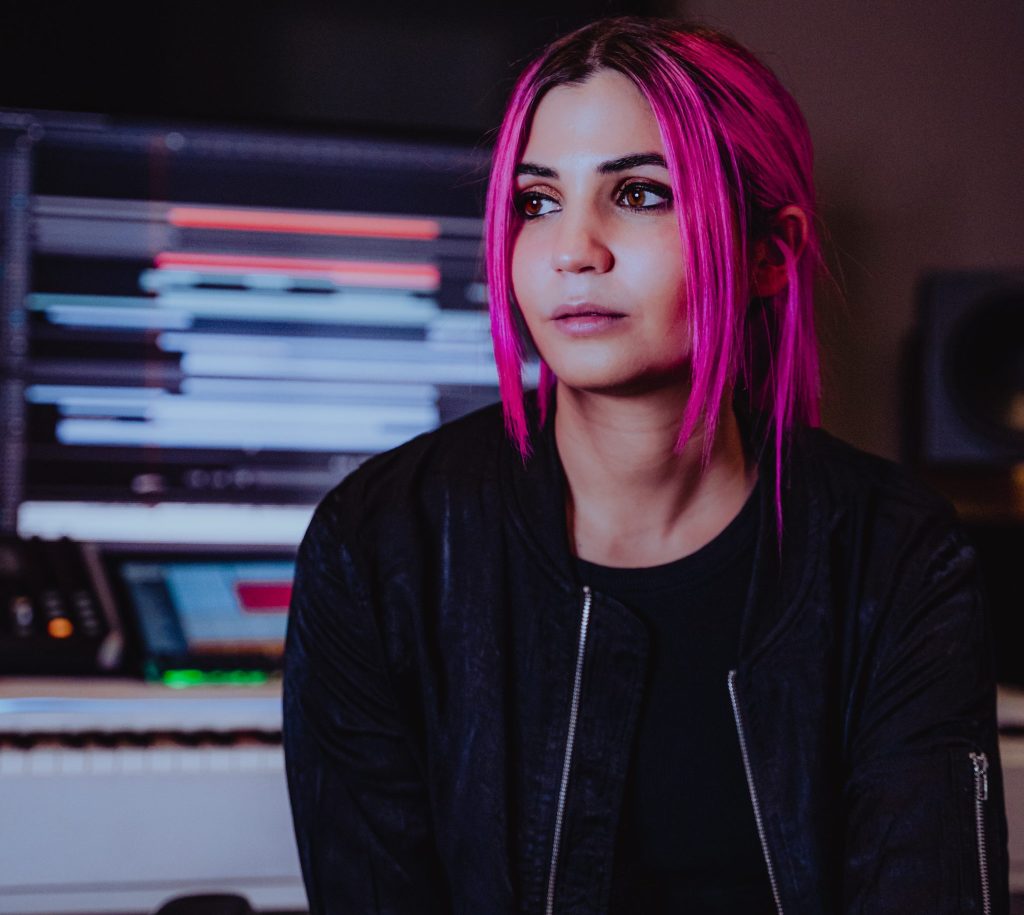
Tori Letzler
Tori Letzler is known for her synth-laden compositions on Netflix’s In From the Cold and Fortnite’s Mega City. As a vocalist, she has recorded on countless soundtracks for blockbusters such as Captain Marvel and Thor: The Dark World. Her voice became her superpower to unlock doors in the composing world.
“I started my career in LA 12 years ago. The first place I interned and then worked at was Remote Control. At the time, I only had my eyes on being a composer,” Letzler says. “Word got out about my past singing for Cirque du Soleil. I quickly realized that pursuing composing and singing would help me build my client base. I record and produce my vocals remotely, which has become an additional tool for my scores and others’.”
This line of work has influenced the way she composes music in more ways than one. “When writing a melodic theme, I ask myself, ‘Can I sing this? Could someone hum this?’ If the answer is no, it may not be memorable,” she explains.
Letzler’s tip for musicians who want to compose is to take action: “You have access to so many sample libraries and master classes. Social media has changed how we network with other creatives. If you’re not taking advantage of it, you’re missing out.”
“I love incorporating microtones and ragas into traditional orchestral music. Being able to experiment and fuse genres is what creating is all about."
Raashi Kulkarni
Raashi Kulkarni
Raashi Kulkarni left her career in an office to compose music for visual media. And what a pivot that was. From CW’s The Flash to Netflix’s Wedding Season, her music has breathed life into hundreds of scenes.
“I practiced every day after work, teaching piano and flute, doing gigs on the weekends, and scoring projects to build my portfolio. It wasn’t until my third year in the corporate world that I realized it couldn’t be just a hobby,” Kulkarni admits. After quitting her job, she moved to LA to attend USC’s Screen Scoring program. “Then, I worked with various composers on a project basis until I landed a full-time job with Blake Neely. After five years of assisting and additional writing, I went freelance,” she recalls.
For Kulkarni, drawing inspiration from both Western and Indian cultures comes naturally. “I love incorporating microtones and ragas into traditional orchestral music. Being able to experiment and fuse genres is what creating is all about,” she says. That’s precisely what she did with many of her scores, including the one for A Nice Indian Boy, which premiered at SXSW.
Still, no one understands better than Kulkarni how tough it can be to get started. Her advice: “Start by scoring scenes from your favorite films or shows to practice syncing your music to visual cues. Immerse yourself in storytelling. Understand how music enhances narrative and emotion.”

“If you don't understand how to work in a DAW, dive in, and you’ll learn as you go. Keep putting it off, and you may never start at all.”
Michael Van Bodegom-Smith
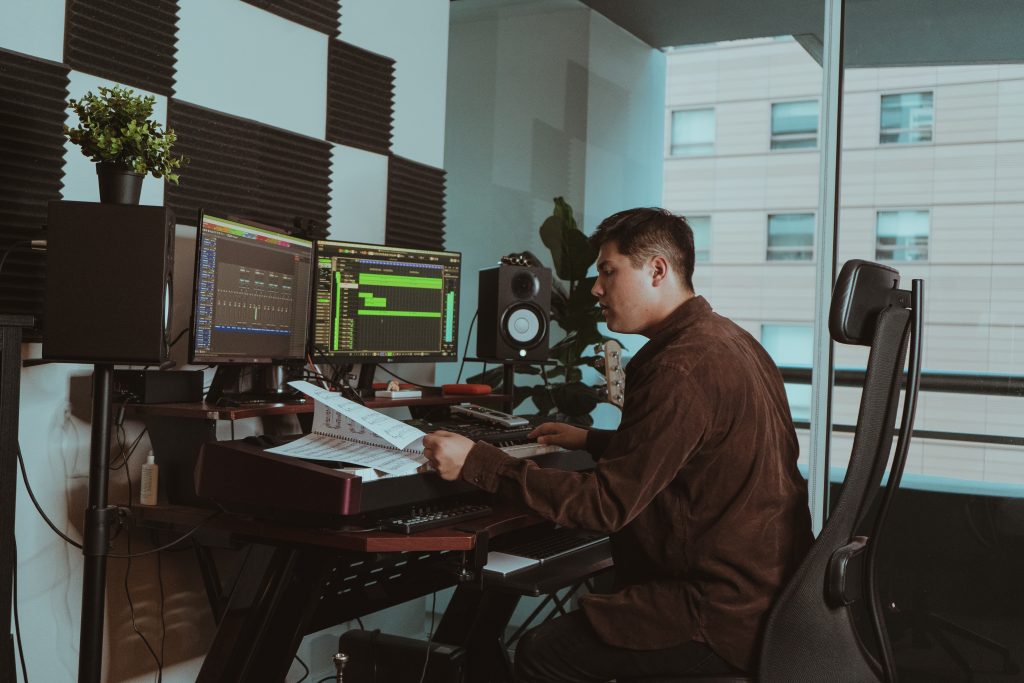
Michael Van Bodegom-Smith
Michael Van Bodegom-Smith is best known for contributing additional music to the Netflix series Princess Power and scoring the award-winning short Kenya’s Symphony. When he’s not busy composing, he can be found orchestrating or recording the trumpet and trombone for others’ scores. To him, it is this delicate balance that keeps his business afloat.
“I’ll have nothing lined up for a month. Then, within one week, I’ll get three brass recording sessions, requests for additional music, duties as a scoring assistant—all due at the same time,” says Van Bodegom-Smith. Luckily, having gotten into arranging in his early years made such tasks second nature to him. “I was a devoted trumpet player. After sitting through hours of rests during classical-era symphonies, I began to listen and observe the orchestra. Eventually, I started arranging and composing for the ensembles I played in, making changes on the spot and bringing revised copies to the following rehearsal. That was crucial for testing out various orchestration approaches,” he reveals.
Still, Van Bodegom-Smith acknowledges how vital technology is. As someone who didn’t own a computer until the first day of college, his tip is to face your fears head-on: “If you don’t understand how to work in a DAW, dive in, and you’ll learn as you go. Keep putting it off, and you may never start at all.”
"There is no single path to success. Always be open to opportunities. Sometimes, you may not realize your potential until you are put to the test."
Katya Richardson
Katya Richardson
Katya Richardson reached new heights in her career when she scored the Oscar-winning short The Last Repair Shop. Richardson had already composed for the LA Philharmonic and numerous short films. When directors Kris Bowers and Ben Proudfoot invited her to score their film, she was ready.
“We had two and a half weeks for the entire process from writing to mixing,” answers Richardson when asked about the timeline of events. Scoring a film about music came with unique challenges. “Kris and I discussed the instrumentation and how the music needed to highlight the instruments we see on screen. Kris crafted beautiful themes for each of our four subjects, and those piano sketches became the backbone of my score,” says Richardson.
One of the biggest lessons she learned during the recording sessions for The Last Repair Shop was how rewarding it could be to work with studio musicians. “There’s a scene about practicing an instrument, and I asked the orchestra to perform as if they were just learning how to play. That effect was something I couldn’t convey in the MIDI mockups,” explains Richardson.
Her advice for aspiring composers is simple: “There is no single path to success. Always be open to opportunities. Sometimes, you may not realize your potential until you are put to the test.”
